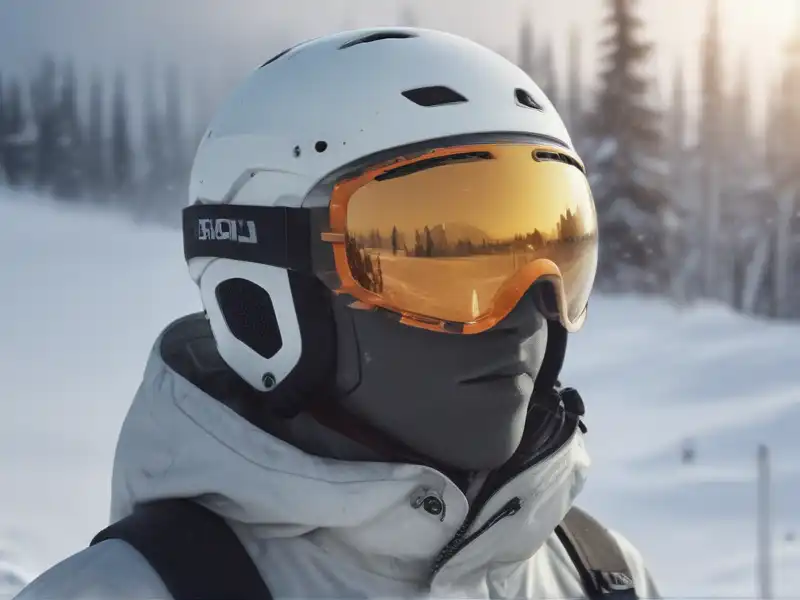Stay Safe on the Slopes: How to Properly Fit and Adjust Your Snow Helmet

When hitting the slopes for a day of skiing or snowboarding, safety should always be a top priority. One essential piece of equipment that can protect you from serious head injuries is a snow helmet. However, simply wearing a helmet is not enough to ensure your safety – it must be properly fitted and adjusted to provide maximum protection. In this article, we will discuss the importance of wearing a snow helmet, how to properly fit and adjust it, and the key features to look for when choosing the right helmet for your winter adventures.
Importance of Wearing a Snow Helmet:
Before we delve into the specifics of fitting and adjusting a snow helmet, let's first understand why wearing one is crucial. Snow sports, such as skiing and snowboarding, involve high speeds and the risk of collisions with other skiers, trees, or obstacles on the slopes. In the event of a fall or impact, a snow helmet acts as a protective barrier for your head, reducing the risk of severe head injuries, concussions, or even fatal accidents. Regardless of your skill level or experience on the slopes, wearing a helmet is a non-negotiable safety measure that can make all the difference in an emergency situation.
Proper Fitting of a Snow Helmet:
Now that we understand the importance of wearing a snow helmet, the next step is to ensure that it fits correctly on your head. A properly fitted helmet should feel snug and comfortable without being too tight or loose. To achieve the right fit, follow these steps:
1. Measure Your Head: Before purchasing a snow helmet, measure the circumference of your head using a soft measuring tape. Helmets are available in different sizes, so it is essential to determine your head size to find the best fit.

2. Try It On: When trying on a snow helmet, make sure it sits level on your head and covers the top of your forehead without obstructing your vision. The helmet should feel snug but not overly tight, and the chin strap should be adjusted to keep the helmet in place.
3. Adjust the Fit System: Most snow helmets come with a fit system, such as a dial or pads, that allows you to customize the fit to your head shape. Take the time to adjust the fit system to achieve a secure and comfortable fit that will stay in place during your winter activities.
Key Features to Look for in a Snow Helmet:
In addition to proper fitting, there are several key features to consider when choosing a snow helmet for your adventures on the slopes. These features can enhance the safety, comfort, and overall performance of the helmet, ensuring that you are well-protected during your winter outings. Some essential features to look for include:
1. Impact Protection: Opt for a snow helmet with multi-impact foam or MIPS technology, which provides advanced protection against rotational forces in the event of a crash.
2. Ventilation: Look for helmets with adjustable venting systems that allow you to regulate the airflow and temperature inside the helmet, keeping you comfortable in varying weather conditions.
3. Audio Compatibility: If you enjoy listening to music while skiing or snowboarding, choose a helmet with built-in audio compatibility or a space to accommodate audio devices for added convenience on the slopes.
In conclusion, wearing a properly fitted and adjusted snow helmet is essential for staying safe on the slopes during your skiing and snowboarding adventures. By following the guidelines outlined in this article, you can ensure that your helmet provides maximum protection and comfort while enjoying the thrill of winter sports. Remember to prioritize safety, choose a helmet with the right features for your needs, and always wear it whenever you hit the slopes. Stay safe and have a great time exploring the snowy terrain with peace of mind knowing that you are well-prepared for any challenges that may come your way.
-

Protect Your Head: The Science Behind Snow Helmet Safety Standards
As winter sports enthusiasts hit the slopes each year, one key piece of equipment stands out as essential for safety: the snow helmet. With advancements in technology and a better understanding of hea...
-

How Do I Choose the Right Ski Boots for My Skill Level?
Discover how to choose the perfect ski boots based on your skill level. From flex index to fit, our expert guide covers everything you need to know for comfort and performance on the slopes....
-

How to Choose the Best Winter Sports Gear for Peak Performance and Comfort
Discover the essential guide to choosing the best winter sports gear for skiing, snowboarding, and more. Learn how to select the right clothing, equipment, and accessories to stay warm, safe, and perf...
-

Winter Gear on a Budget: How to Stay Warm and Stylish
Discover how selling rare coins online can fund your winter gear. Learn where to sell coins, maximize profits, and stay warm and stylish this season without breaking the bank! ...